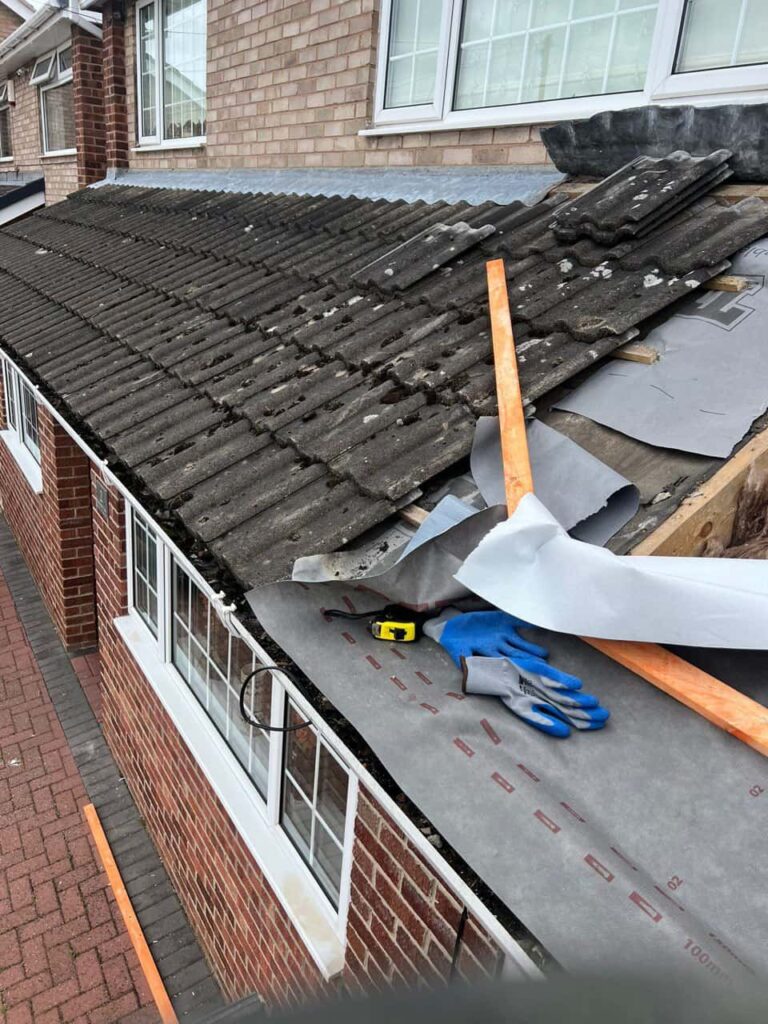Gable end roofs are a popular choice for many properties in Newark on Trent, Nottingham, thanks to their classic triangular shape and excellent water drainage capabilities. However, over time, the gable end sections can suffer damage from weather exposure, structural movement, or general wear and tear. At Newark on Trent Roofing Repairs, we often see issues that, if addressed promptly, can prevent more serious problems from developing.
Understanding the Causes of Gable End Roof Damage
Several factors can contribute to damage in gable end roof sections:
- High winds can loosen or dislodge tiles and mortar.
- Water ingress can weaken structural elements over time.
- Ageing mortar in ridge and verge tiles can crumble, leading to instability.
- Poor ventilation can cause internal condensation, affecting timber supports.
By understanding the cause, it’s easier to apply the right repair technique and avoid recurring issues.
Step-by-Step Approach to Repairing Gable End Sections
1. Inspect the Damage
Begin with a careful inspection from ground level using binoculars, or hire professionals to carry out a close-up roof survey. Look for cracked tiles, missing mortar, gaps in verge sections, and signs of sagging.
2. Remove Damaged Materials
If tiles or verge units are broken, they must be removed carefully to avoid damaging surrounding areas. For mortar repairs, loose or crumbling material should be chiseled away before re-bedding.
3. Check the Underlying Structure
Before replacing tiles or verge units, assess the timber or concrete supports beneath. Damaged or rotting battens should be replaced to maintain a secure fixing point.
4. Re-Bed and Secure Tiles
Ridge and verge tiles should be re-bedded on a fresh layer of strong mortar, ensuring a firm and weatherproof seal. In some cases, dry verge systems can be installed for a longer-lasting solution with reduced maintenance.
5. Seal and Finish
Once tiles are in place, all mortar joints should be neatly pointed to prevent water penetration. Any exposed timber should be treated to guard against rot and decay.
Preventing Future Gable End Roof Issues
To reduce the likelihood of future damage:
- Schedule regular roof inspections to spot early signs of wear.
- Keep gutters clear to avoid water pooling near the gable ends.
- Ensure adequate roof ventilation to minimise condensation issues.
Conclusion
Damaged gable end roof sections can compromise the integrity and appearance of your property if left unchecked. With timely intervention and professional attention, these issues can be resolved effectively. Newark on Trent Roofing Repairs provides expert gable end roof repairs throughout Newark on Trent, Nottingham, helping homeowners protect their properties and avoid costly structural problems in the future.
Call us on: 01636 556 194
Click here to find out more about Newark on Trent Roofing Repairs
Click here to complete our contact form and see how we can help with your roofing needs.

